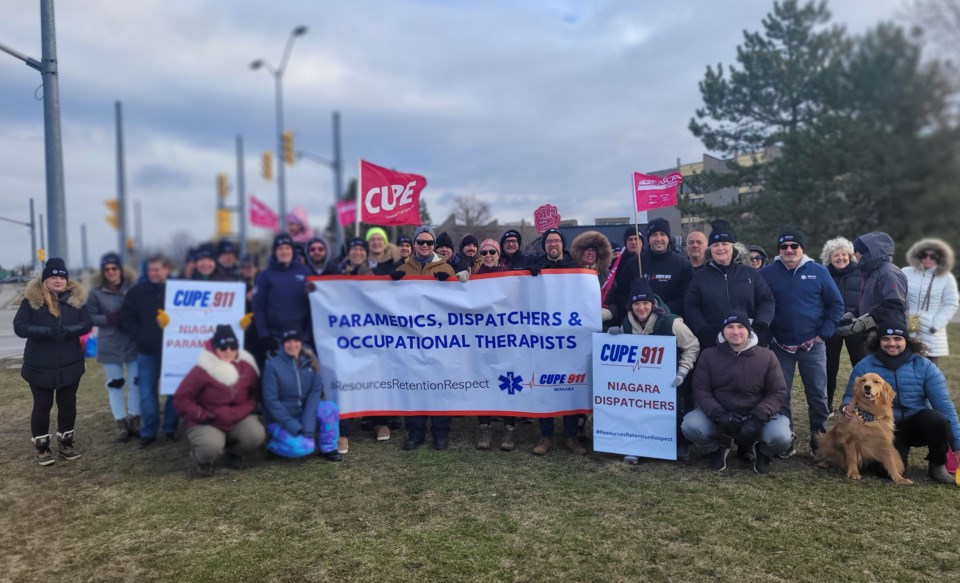Long waits for ambulances could get even longer, if ambulance paramedics and dispatchers are not able to successfully bargain a new contract.
They were out in numbers Monday morning in front of White Oaks Resort and Spa, a cold, wintry day to be staging a rally, with Niagara EMS workers from CUPE 911 hoping to make the public aware of the issues they’re facing.
While the province provides a portion of the cost, the Region is the employer of about 400 paramedics, and dispatchers of CUPE 911, a number that makes the region’s emergency services severely understaffed, says union president Jon Brunarski.
The service was already short-staffed when the last contract was signed in the fall of 2023 — it took three years to get it settled, with employees working without a contract, and ending with an arbitrated decision.
“We’re trying to prevent that from happening again,” says union vice-president Dave Barnett. “We want to see this settled before we lose more staff."
The number of paramedics and dispatchers has continued to decline, and they are down about another 72 staff members, or 20 per cent of their workforce. Yet call volumes have increased with a growing and aging population, “and we only have three hospitals we can go to,” explains Brunarski.
The offloading waits became a significant issue when the Hotel Dieu Hospital closed, he says. Until recently, minor cases could still be transported to the Fort Erie or Port Colborne urgent care centres, while life-threatening cases would be taken to Niagara Falls, Welland or St. Catharines. But now ambulances are only allowed to go to the three main hospitals, which makes the offload delays even longer.
“We see it every day, people lying on stretchers in hallways. We can’t leave them there, we have to stay to look after them."
And it's difficult to look after them properly in a hallway, with no access to food, for hours on end. "That's not the way it should be."
He describes a typical day of 33 ambulances operational across the region, and 20 of them unable to respond to other calls while staff wait with patients in hospital hallways,.
There are times when there are so many ambulances held up at hospitals, he says, “there are very few left across the region to take calls. And we can’t staff them.”
There are also Code Zeros, when there are no ambulances to respond.
The morale of paramedics is suffering, making retention difficult — in addition to resources and retention, their third issue the union is addressing is respect for staff.
“We work 12- to 14-hour shifts, and sometimes we work them without a break,” mainly because of offload delays, says Brunarski.
They were getting lots of support Monday from cars honking as they drove by, likely because the impacts of the staff shortage on Niagara healthcare have become more and more obvious, as hospital emergency rooms become so backed up they occasionally have to shut down for several hours at a time. While that is a larger problem that has to be solved, the number of patients waiting in hallways with paramedics is part of the delay, says Brunarski.
As the rally was underway outside White Oaks, inside bargaining was continuing for the seventh day. What would happen at the end of the day, he told The Local, “we have no idea.”

.png;w=120;h=80;mode=crop)

